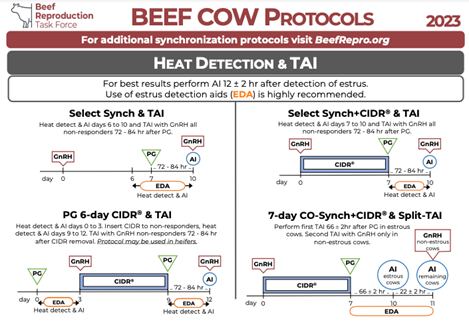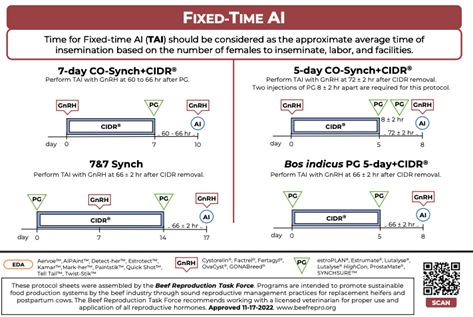
Beef Cow Protocols
For this post we're diving into the different approaches available within beef cattle estrus synchronization protocols. Let's explore the three main methods: Heat Detection, Fixed Time AI, and Timed AI!


- Heat Detection: Traditionally, heat detection relies on visual observation of behavioral signs that indicate a cow or heifer is in heat (estrus). This method requires keen observation and identification of mounting behavior, restlessness, increased vocalization, and other signs. Once detected, AI is performed at the optimal time, usually within 12-24 hours after observing estrus. Heat detection can be effective but requires diligent monitoring and skilled personnel.
- Fixed Time AI: In fixed time AI protocols, the goal is to synchronize the estrous cycles of a group of cows or heifers. Hormonal treatments, such as prostaglandin and/or progesterone, are administered to induce regression of the corpus luteum (CL) and initiate new follicular growth. Following a predetermined schedule, all animals are inseminated at a fixed time, typically 48-72 hours after hormonal treatment. This method eliminates the need for heat detection but requires accurate administration of hormones and precise timing of insemination.
- Timed AI: Timed AI protocols combine the advantages of both heat detection and fixed time AI. Hormonal treatments are administered to synchronize the estrous cycles of a group of cows or heifers, similar to fixed time AI. However, in timed AI, a specific window of time is allocated for insemination based on heat detection, followed by a fixed time AI for all non-estrus cows or heifers. This ensures that animals are inseminated within the optimal timeframe for conception, even if no heat signs are observed. Timed AI provides greater flexibility and reduces reliance on visual heat detection, making it suitable for large-scale operations or situations where heat detection may be challenging.
Each method has its merits and considerations, and the choice depends on the specific needs and resources of your operation. Below are the current recommended estrus synchronization protocols from the Beef Reproductive Task Force (https://beefrepro.org/). It's important to consult with your veterinarian or reproductive specialist to determine the most suitable approach for your herd.
By embracing these advanced AI techniques within beef cattle estrus synchronization protocols, we can enhance breeding efficiency, achieve genetic progress, and ultimately improve the productivity and profitability of our herds!

|
|
|